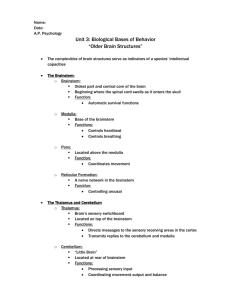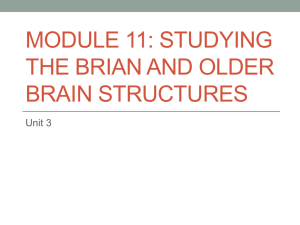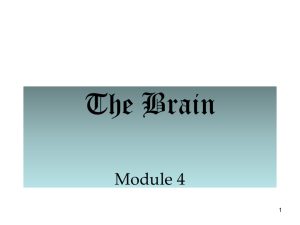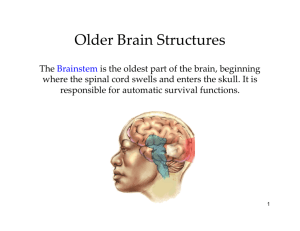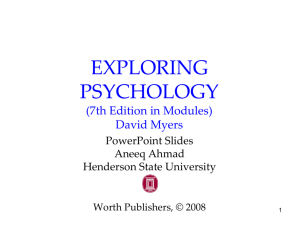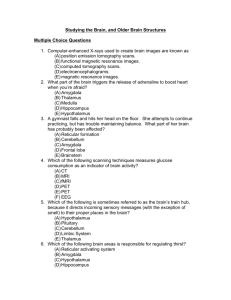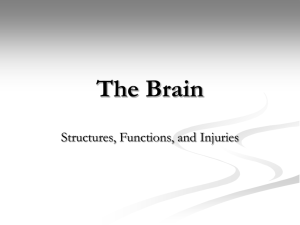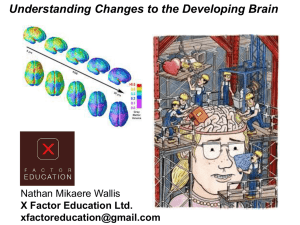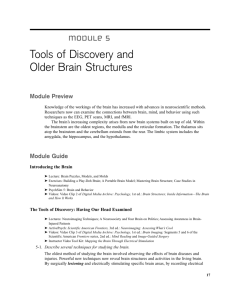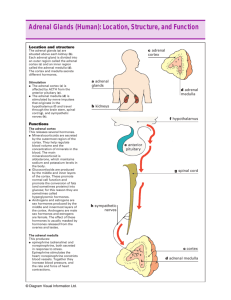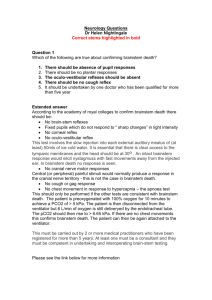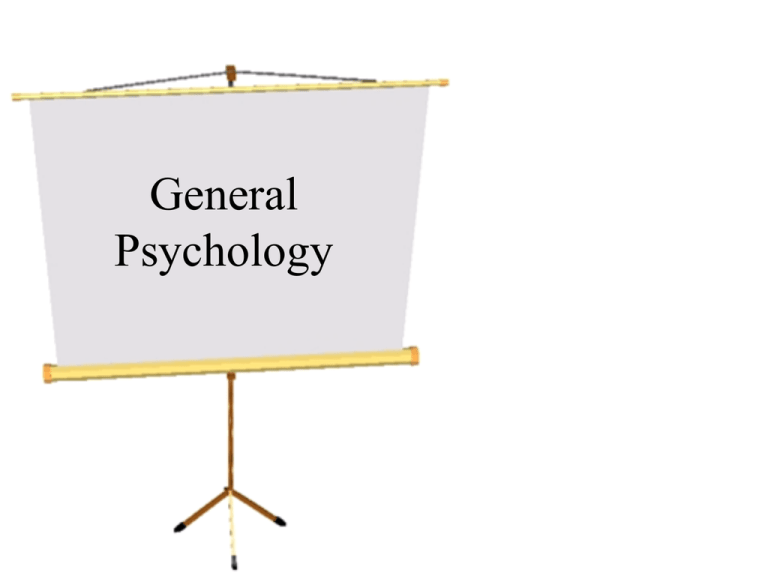
General
Psychology
Scripture
• Matthew 5:5
"Blessed are the meek, for they will inherit the
earth.
Happy are the meek - They that hold all their
passions and affections evenly balanced. They
shall inherit the earth - They shall have all things
really necessary for life and godliness.
The Endocrine System
The Endocrine
System is the body’s
“slow” chemical
communication
system.
Communication is
carried out by
hormones
synthesized by a set
of glands.
Hormones act on
neurons and tissues.
Hormones
Hormones are chemicals synthesized by the
endocrine glands that are secreted in the
bloodstream. Hormones affect the brain and many
other tissues of the body.
Nervous system is like email and the endocrine is
like snail mail. It is slower but lasts longer.
Feelings of excitement last after event is over.
For example, epinephrine (adrenaline) increases
heart rate, blood pressure, blood sugar, and
feelings of excitement during emergency
situations.
Pituitary Gland
Is called the “master gland.” The anterior pituitary
lobe releases hormones that regulate other glands.
The posterior lobe regulates water and salt balance.
Adrenal Glands
Adrenal glands consist of the adrenal medulla and
the cortex. The medulla secretes hormones
(epinephrine and norepinephrine) during stressful
and emotional situations, while the adrenal cortex
regulates salt and carbohydrate metabolism.
“He was no longer Gage…”
Before
• – efficient foreman
• – well-balanced mind
• – shrewd smart business man
After
• – Fitful
• – Irreverent, and grossly profane
• – Little deference for his fellows
• – Impatient and obstinate, yet
capricious and
• vacillating
• – Poor planning
There is a Phineas Gage display in the
Warren Medical Museum at Harvard
University
• This is what went through his brain…
Images of Brain Activity
Normal Child
Institutionalized Romanian
Orphan
Dark tones show brain areas such as the temporal lobes, which oversee
emotion among other functions, are practically inactive in the Romanian child
compared to the healthy child.
The Brain
Techniques to Study the Brain
A brain lesion
experimentally
destroys brain tissue to
study animal behaviors
after such destruction.
Hubel (1990)
Clinical Observation
Clinical observations have shed light on a
number of brain disorders. Alterations in brain
morphology due to neurological and
psychiatric diseases are now being catalogued.
Tom Landers/ Boston Globe
Electroencephalogram (EEG)
An amplified recording of the electrical waves
sweeping across the brain’s surface, measured
by electrodes placed on the scalp.
AJ Photo/ Photo Researchers, Inc.
PET Scan
Courtesy of National Brookhaven National Laboratories
PET (positron emission
tomography) Scan is a
visual display of brain
activity that detects a
radioactive form of
glucose while the brain
performs a given task.
MRI Scan
MRI (magnetic resonance
imaging) uses magnetic
fields and radio waves to
produce computergenerated images that
distinguish among
different types of brain
tissue. Top images show
ventricular enlargement in
a schizophrenic patient.
Bottom image shows brain
regions when a
participants lies.
Both photos from Daniel Weinberger, M.D., CBDB, NIMH
James Salzano/ Salzano Photo
Lucy Reading/ Lucy Illustrations
The Brain:
The Brainstem begins where the spinal cord swells and
enters the skull. It is responsible for automatic survival
functions.
Brainstem
The Medulla [muhDUL-uh] is the base of
the brainstem that
controls heartbeat and
breathing.
Brainstem
The Thalamus [THAL-uhmuss] is the brain’s sensory
switchboard, located on top
of the brainstem. It directs
messages to the sensory
areas in the cortex and
transmits replies to the
cerebellum and medulla.
This is London to England’s
trains…a hub through
which traffic passes en route
to various destinations.
Brainstem
Reticular Formation is a
nerve network in the
brainstem that plays an
important role in
controlling arousal.
Cerebellum
The “little brain”
attached to the rear of
the brainstem. It helps
coordinate voluntary
movements and balance.
The Limbic System
The Limbic System is a
doughnut-shaped
system of neural
structures at the border
of the brainstem and
cerebrum, associated
with emotions such as
fear, aggression and
drives for food and sex.
It includes the
hippocampus, amygdala,
and hypothalamus.
Amygdala
The Amygdala [ah-MIGdah-la] consists of two lima
bean-sized neural clusters
linked to the emotions of
fear and anger.
Hypothalamus
The Hypothalamus lies
below (hypo) the
thalamus. It directs
several maintenance
activities like eating,
drinking, body
temperature, and
control of emotions. It
helps govern the
endocrine system via
the pituitary gland.
Reward Center
Sanjiv Talwar, SUNY Downstate
Rats cross an electrified
grid for self-stimulation
when electrodes are
placed in the reward
(hypothalamus) center
(top picture). When the
limbic system is
manipulated, a rat will
navigate fields or climb
up a tree (bottom
picture).
The Cerebral Cortex
The intricate fabric of interconnected neural cells that
covers the cerebral hemispheres. It is the body’s ultimate
control and information processing center.
Caution
• One should be wary of using pictures of
brain “hot spots” to create a new
phrenology that locates complex functions
in precise brain areas (Uttal, 2001).
• Mental functions don’t reside in any one
place. Memory, language, and attention
result from the synchronized activity
among distinct brain areas (Knight, 2007).
Aoccdrnig to a rseearch sduty at Cmabrigde
Uinervtisy, it deosn't mttaer
in waht oredr the ltteers in a wrod are, the
olny iprmoetnt tihng is taht
the frist and lsat ltteer be at the rghit
pclae. The rset can be a total
mses and you can sitll raed it wouthit a
porbelm.Tihs is bcuseae the
huamn mnid deos not raed ervey lteter by
istlef, but the wrod as a wlohe.
What Do You See ?
THE END……DNE EHT

